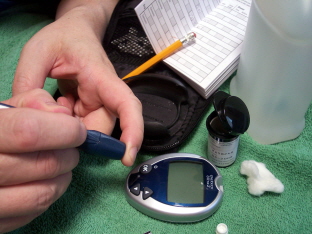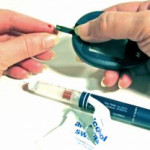 There are three different types of diabetes which can affect individuals. Two of these are what are commonly called sugar diabetes. The medical terms for these are Type 1 diabetes and Type 2 diabetes. The third type of diabetes is water diabetes or diabetes insipidus.
There are three different types of diabetes which can affect individuals. Two of these are what are commonly called sugar diabetes. The medical terms for these are Type 1 diabetes and Type 2 diabetes. The third type of diabetes is water diabetes or diabetes insipidus.
Type 2 diabetes is a complex medical condition that results in increased blood sugar from the body’s resistance to insulin. In other words, there is not a depletion of insulin in the body but rather a problem with the insulin being used at the cellular level. This results in an increased amount of blood sugar in the blood stream which significantly damages the eyes, heart, kidneys and brain. (1)
The medical terminology that describes high blood sugar is hyperglycemia. It is estimated that over 15 million people in the United States out of the 17 million who suffer from diabetes experienced Type 2 diabetes. Type 2 diabetes is also sometimes called non-insulin-dependent diabetes because it changes the metabolism of carbohydrates, lipids and protein without shutting off the production of insulin. (2)
The resistance to insulin is the major reason that complications occur. This condition can go under diagnosed, especially when it does not cause extremely high blood sugar and symptoms can be attributed to any other underlying medical condition. Treatment for Type 2 diabetes is also different from Type 1 diabetes because many people are able to control their condition with weight loss, diet, exercise and lifestyle changes.
In the past decade there has been an introduction of new oral medications that can also delay the use of injectable insulin once lifestyle changes are no longer effective. Researchers have found that diabetics who have been experiencing symptoms less than 10 years and are able to incorporate lifestyle changes can use oral hypoglycemic options for years before requiring insulin. (3)
Type 1 diabetes is also called juvenile diabetes or insulin-dependent diabetes. Treatment of this condition should be best addressed by a team of specialists which can include the child, the parents, a nutritionist, and an endocrinologist as well as others who are well-versed in treating youngsters with diabetes.
Type 1 diabetes results when the islet cells which produce insulin in the pancreas completely shut down and the body no longer has insulin available. Insulin is responsible for moving blood sugar into the cells so that energy can be produced. This is the powerhouse of the cellular system and what feeds the body and allows it to work correctly. (4)
References:
(1) University of Maryland Medical Center: Diabetes
http://www.umm.edu/altmed/articles/diabetes-000049.htm
(2) American Diabetes Associations: Diabetes Statistics
http://www.diabetes.org/diabetes-basics/diabetes-statistics/
(3) Diabetes Journal: Trends in Use of Oral Hypoglycemic Agents
http://care.diabetesjournals.org/content/11/7/558.full.pdf
(4) American Diabetes Association: Diabetes Basics
http://www.diabetes.org/diabetes-basics/type-1/
(5) University of Illinois At Chicago :Promising Advances in Islet Cell Transplants for Diabetics
http://www.sciencedaily.com/releases/2008/06/080609141225.htm
| Advertisement | |
 |
|


Leave a Reply